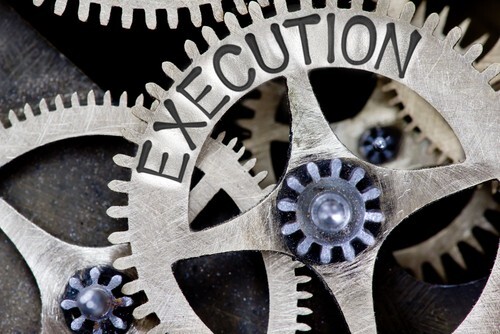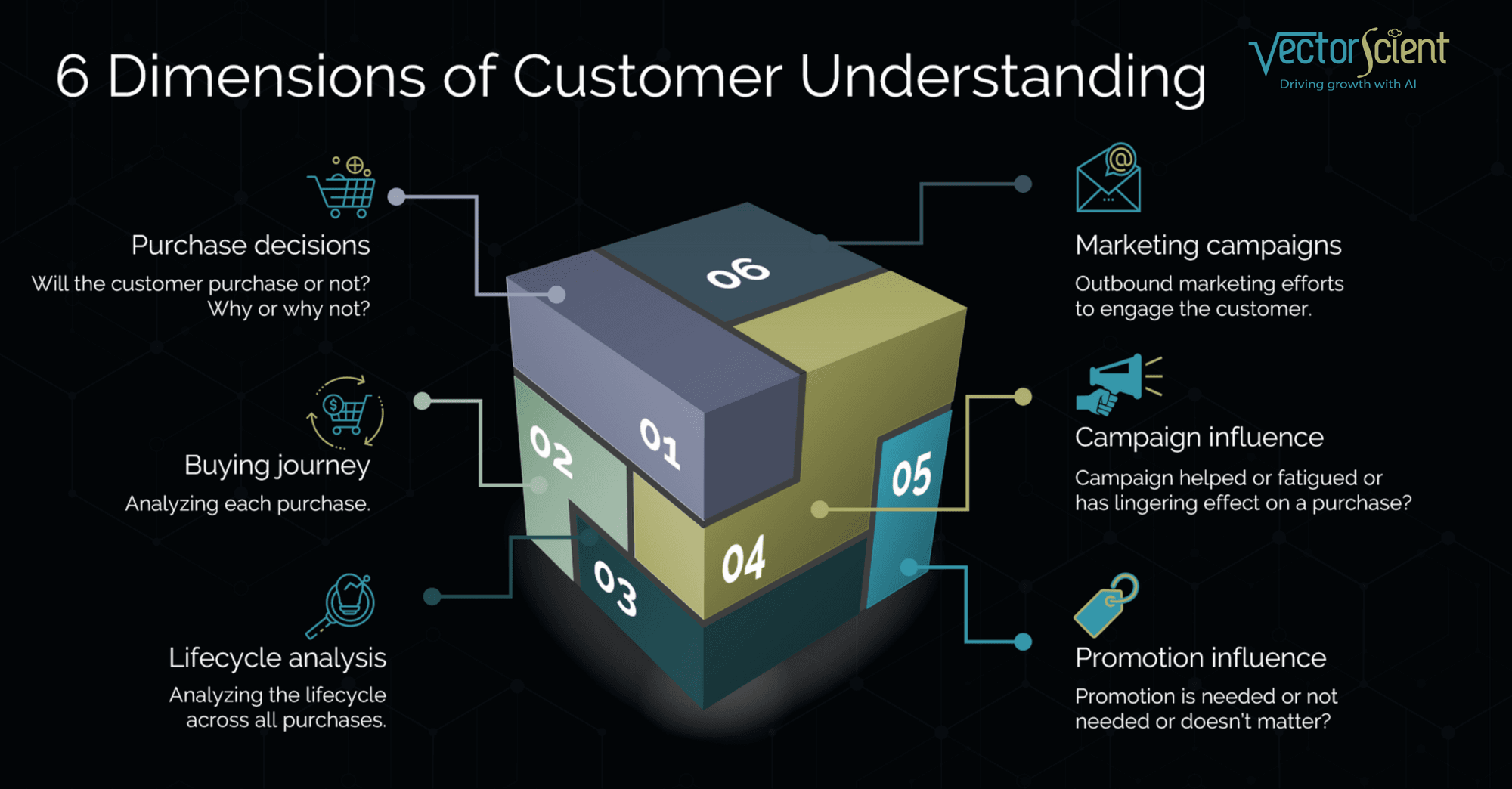A Definitive Guide to Profitable growth for your E-Commerce
Customer-centric strategy for achieving profitable growth.
Introduction
More often than not we see people talking about the growth of the business in terms of an increase in revenue. But being profitable is important for sustainable growth. Ultimately, the measure of a successful business is in making the smart decisions that drive your business towards higher margins while keeping costs as low as possible, making trade-off decisions confidently towards ensuring long-term growth while being profitable.
What is Profitable Growth?
Profitable growth is about ensuring the organizations do not lose sight of the profit margins, even as they are focused on growing the business. At times, profitability may take a hit when organizations pursue aggressive growth strategies that need significant investments, while there are times when they sacrifice future growth prospects by cutting investments in an effort to increase profitability. But over a long period of time, businesses need to grow profitably to stay healthy and competitive.
Why is managing Profitable Growth important?
While revenue is easy to measure as the orders come in, the profitability is not so easy to compute. At least not as quickly. The costs are too many, are spread all over the organization and the impact is not known immediately. The marketing and advertising costs incurred, to bring in the customers to the website, the promotions, and discounts that are needed to encourage the sale to happen, outbound shipping, and delivery costs that further decrease the margins, are all examples of various types of unavoidable costs. Then there are cases of unsold items running the risk of becoming obsolete, and the organization is forced to sell those at a loss.
The path to profitability is hard, with limited visibility. Profitable growth requires a line of sight to all the factors that impact the revenue growth and the costs that are required to make that revenue happen. The organization not only needs the line of sight, but also the willingness to execute based on those insights.
Customer Centricity and Profitable Growth
Customer-centric businesses are those that make business decisions keeping customer perspective in mind. These organizations have an intimate understanding of each of their customers and are able to address their needs, wants, and preferences which are often unstated. And it makes good economic sense too. McKinsey’s 2019 research underscores this eloquently – “A fundamental change of mindset focusing on the customer, along with operational and IT improvements, can generate a 20 to 30 percent uplift in customer satisfaction, a 10 to 20 percent improvement in employee satisfaction, and economic gains ranging from 20 to 50 percent of the cost base addressed in the various journeys.”
When a business is centered around customers, the related business policies, processes, capabilities would naturally follow the implications on the end outcome of the customer as the ultimate beneficiary. Customer-centric businesses also ensure that there is a direct link between the investments they make and the impact on the end customer.
All of these result in customer-centric businesses acquiring highly profitable customers with high spend potential, retaining them for a long period of time into the future – making profitable growth, a definitive outcome.
Drivers for Profitable Growth
The drivers for revenue growth are separate from those that drive the profit margins. But oftentimes, there is a tradeoff between those drivers. For instance, the goal of avoiding backorders, which increases the revenue, will need a high level of inventory on hand, which in turn increases the cost of holding the inventory as well as the risk of that inventory getting obsolete and having to sell later at a loss. These risks when they materialize, increase the costs, and reduce profitability.
The pursuit of sales and growth is seen as an aggressive strategy, while a focus on profitability is a defensive strategy. Both are required for a successful business. How much a business leans into one over the other is dependent on the industry and business model.
Drivers for revenue growth
Businesses are trying to reach customers wherever they are. COVID has caused a dramatic shift in consumer behaviors and by some estimates, generated nearly five years’ worth of growth in just one year. All these have resulted in blurring the line between various business models and opened up new avenues for growth.
-
Consumer packaged goods (CPG) companies that traditionally sold through retailers are selling directly to consumers through their own websites. The trend has been strong over the past 5 years with nearly 60% of the new investments in CPG Majority of CPG investments go to direct-to-consumer brands. The pandemic has only strengthened this trend further.
-
Physical retailers have increased their online presence and offering delivery services. Kroger, grew their online sales by 79%, breaking into the list of top 10 e-commerce businesses in the US. Four out of the Top 10 e-commerce businesses in the US have a dominant physical presence, including Target, Costco, HomeDepot, Apple, Walmart
-
Digital Native brands that sell only through their websites are selling through other distribution channels, similar to their more traditional CPG counterparts. Casper mattresses are available through Target. Warby Parker has opened its retail stores. Harry’s is available through retail channels.
The key drivers for revenue growth are
-
Customer acquisition strategies
-
Sales channels
-
Conversion rate optimization strategies
-
Customer retention and maximizing the lifetime value of every customer
-
Merchandising strategies
Depending on how the business has evolved, and the lifecycle stage of the business, some of these drivers are more important than others. In the early stage companies, customer acquisition and choosing the right sales channel is very significant. For an already growing business, focus on customer retention and adding additional channels is vital.
Acquiring new customers – Sell to more people
New customers drive growth. E-commerce businesses need new customers who stay for a long time into the future and have a high degree of spend potential.
While digital advertising will continue its dominance over the next 5 years as the most impactful channel, other media such as TV, Radio, Direct Mailers, and out-of-home advertising could work better based on product categories that need to be marketed, and the business model. Identifying the right audience to market to, investing in the right marketing channels, and making the required investments to get them to a sales channel, is a key driver for revenue growth.
Sales channels – Sell at more places
E-commerce businesses can potentially sell on any number of channels. And more channels mean more opportunities to sell – your own website, marketplaces like Amazon which has more than 2 Million active sellers, Walmart, Etsy, eBay, Rakuten complete the list of top marketplaces. Instagram could be a very effective channel for fashion, apparel, and other visual-friendly categories. Some e-commerce businesses have also ventured into selling through physical stores. But each of these channels takes a significant amount of time, resources, and investment to be successful. Investing in the right mix of sales channels is a key driver for revenue growth over a long period of time.
Conversion Rate Optimization (CRO) – Sell better
Once the prospective customers land on the website, e-commerce businesses should make every effort to minimize the opportunity to lose the sale. The most important elements of this strategy are
-
Chatbots that intervene thoughtfully, to answer questions and do guided selling. According to MarTech Advisor, chatbots increased sales by an average of 67%, with 26% of all sales starting through a chatbot interaction.
-
Popups that detect the intent to exit, and offer additional incentives to encourage the sale, can increase sales between 5% to 10%
-
Minimizing the canceled orders and backorders – Make sure the inventory is available for the products that are listed.
-
Follow up on abandoned carts and make efforts to convert them into a sale. AnnexCloud reports 10.7% conversions from abandoned carts with timely emails.
Maximize the Customer Lifetime Value – Sell more and better to your existing customers
Once the hard part of acquiring a customer is accomplished, their value should be maximized. Existing customers provide invaluable signals of their intent and needs. Organizations that invest in understanding their customers at an individual level will be the most successful. Several studies show a near-universal and a compelling impact of personalization on revenue growth. The relevance and depth of personalization determine the impact on sales. The key elements are:
-
Precise targeting for customer retention: Identifying the customers who are most likely to purchase and marketing only to them, increases the likelihood of sales. Indiscriminate marketing will annoy the customers and result in customers leaving your brand.
-
Cross-sell: Product recommendations based on individual customer preferences will increase the basket value.
-
Upsell: Value-added selling by bundling the services, warranties, accessories will increase the basket value
Merchandising – Organize better for more sales.
Effective merchandising is all about making the purchasing decision easy for the customer, while greatly increasing the basket value. The key elements of an effective merchandising strategy are
-
Personalized homepage for known customers
-
Home page based on segmentation for anonymous customers.
-
Products on the home page that reflect the customers’ current needs.
-
A virtual try-on and a “see in the room” experience for categories such as home decor, furniture, eyeglasses, apparel, cosmetics. These technologies improve the shopping experience and increase conversions by as much as 40%.
-
An assortment of products that the customers are likely to buy together. This will increase the basket value, and increase the Average Order Value over time.
-
Product and category level promotions that provide the biggest revenue lift.
Drivers for profitability
COVID-19 has caused significant changes in how customers are shopping and significantly increased the costs of service. While the pandemic-induced surge in demand will probably come down, the expectations of customers are set and will only increase with time. Some of the dominant trends that will strengthen are,
-
Buy online Pick in Store
-
Refunds with no returns required
-
Curbside delivery
-
Delivery by Instacart and other third-party delivery providers
-
Free shipping and free returns
Each of these reduces the profit margin. Businesses that understand the true cost of service can take steps to protect the profit margins by optimizing in other areas.
The key factors that drive the profitability are,
-
Acquisition planning
-
Pricing
-
Promotion spend
-
Other selling costs
Acquisition Planning
How many customers do you need to acquire? A lot of businesses plan for revenue, but only a few break the revenue goals down based on the number of new customers they need to acquire. Determining how many new customers to acquire is smart because it forces you to understand how much revenue potential is remaining from the existing customers. Acquiring more customers than required not only increases the marketing costs but also takes away the focus on customer retention and impedes the efforts to maximize the revenue from those customers.
-
Acquiring new customers based on the revenue goals, and optimizing the spend on marketing.
-
Maximize the lifetime value of every customer, monitor the Lifetime Value (LTV) to Customer Acquisition Cost (CAC) ratio. According to Klipfolio, healthy companies have a ratio anywhere from 3:1.
-
Control the avoidable customer churn, where a customer prematurely stops buying. According to Statista research, the Retail industry experiences 24% churn.
-
Programs to win back the lost customers.
Pricing
Pricing is rarely done in isolation and is dependent majorly on the competitive environment, and varies based on your business model.
For retailers: If your e-commerce business does not have private label (own branded) products, then the price you can charge is already governed by your agreements with the manufacturer brand, and the price that the other retailers are charging. Analytics has a major role to play in determining optimal pricing. The key factors impacting margins are
-
Estimating with a high degree of accuracy, the relationship between price and demand for your products.
-
Quantifying the Impact of a loss-leader strategy – Pricing a few items very low, to attract the customers in, with the expectation that a low margin on few such items will be compensated when customers buy additional items with a higher margin.
-
Pricing for new products to maximize profitability in the initial weeks of launch.
For Brands: The risk for brands comes in the form of wholesale customers bundling additional discounts, even while technically in compliance with the Minimum Advertised Price (MAP) policies. On marketplaces like Amazon, unauthorized sellers undercut by reselling at a discount.
McKinsey’s pricing strategy for retailers is a great read to get up to speed on additional considerations.
Promotion Spend
Product category level and product level promotions cost a lot. Ineffective promotions will drain the profitability of the overall operation. The key factors are:
-
Promoting the products that provide the highest return per dollar spent.
-
Promotions on categories that will lift revenues for adjacent categories as well.
-
Avoiding promotions that incur additional administration and logistics costs – shipping of toys, merchandise, etc.
Most promotions work initially but lose their effectiveness over time, as customers understand the promotion patterns, and wait for promotions. Bain outlines this effectively in their essay, The Pricing Is Right: Lessons from Top-Performing Consumer Companies. The findings show a significant opportunity for the retailer who gets their promotion strategy and capabilities in place. Only 17% are making promotion decisions that are consistent with their positioning, only 14% know how to leverage deep consumer insights, and only 9% have the data, tools, or processes to deliver dynamic pricing.
Minimize other costs of sales
A number of other costs add up and further erode the profit margins. Some of these need a more long-term adjustment.
-
Optimize Shipping costs
Retailers need to be selective about free shipping: Increased customer expectations have made free shipping a given, but steps can be taken to reduce the impact on profitability. Offering Free Shipping based only on certain products, based on order value are common.
-
Reduce shipping costs: Offer customers an incentive to receive products in regular mail instead of priority shipping, even if the customer otherwise qualifies for priority shipping.
-
Bundle into fewer shipments
-
Use the most appropriate box size as the carriers charge based on the size of the box rather than the weight of the box.
-
Minimize discounts
Indiscriminate discounts condition the customers to expect fire sales. But for e-commerce retailers that carry a large amount of unsold inventory, deep discount sales are unavoidable. The root cause of this problem goes to inaccurate demand forecasting and pricing that is not aligned with what customers are willing to pay.
-
Optimize third party costs
Third-Party Fulfillment (3PL) providers carry inventory in their warehouses and fulfill orders on behalf of the organization. Outsourcing a part of your warehousing and logistics can free up the resources, and are a considerable drag on profit margins.
-
Factor in the Third-Party delivery services
-
Instacart, DoorDash, Uber have become mainstream. Customers expect that the E-commerce retailers support these last-mile carriers. Analysis of the transactions by DoorDash shows these services can erode the margins by as much as 20%.
-
E-commerce businesses need to understand the implications of adding these services and try to adjust the pricing to protect the profit margins.
-
-
Reducing returns related expenses
-
Virtual Try-On, measurement tool, “See in your room”, installation guides, and attentive customer support help in reducing buyer remorse and potential for returns.
-
Consider giving refunds on returns without actually requiring the customers to return the product. This will save the expense of shipping and handling costs on returns.
-
Bringing it all together
Profitable growth is first and foremost, a mindset. The data and analytics help the business leaders appreciate the opportunities and threats in the marketplace that they are operating in. A thorough understanding of key factors that drive growth and profitability will set the stage for a structured strategic plan.
The plan obviously is not set in stone. As new customers come in, your understanding of customers gets better, which in turn will allow you to offer products and value-added services that matter to them. There will be decisions to be made, but those will be more informed decisions.
Organizations that have a culture of analytics and have a bias towards action, are the ones that will thrive.
About the author
Suresh Chaganti is the co-founder and COO at VectorScient. Suresh is a retail industry expert and a regular contributor at RetailWire, a leading retail industry publication. He is also a member of RetailWire BrainTrust, a panel of the retail industry thought leaders. His perspectives feature regularly in Forbes and Business Insider. Before co-founding VectorScient, Suresh spent a couple of decades in business and analytics leadership roles in e-commerce, manufacturing, and distribution businesses.
More Articles
Schedule a demo today.
Explore tools designed specifically for your growing business.




